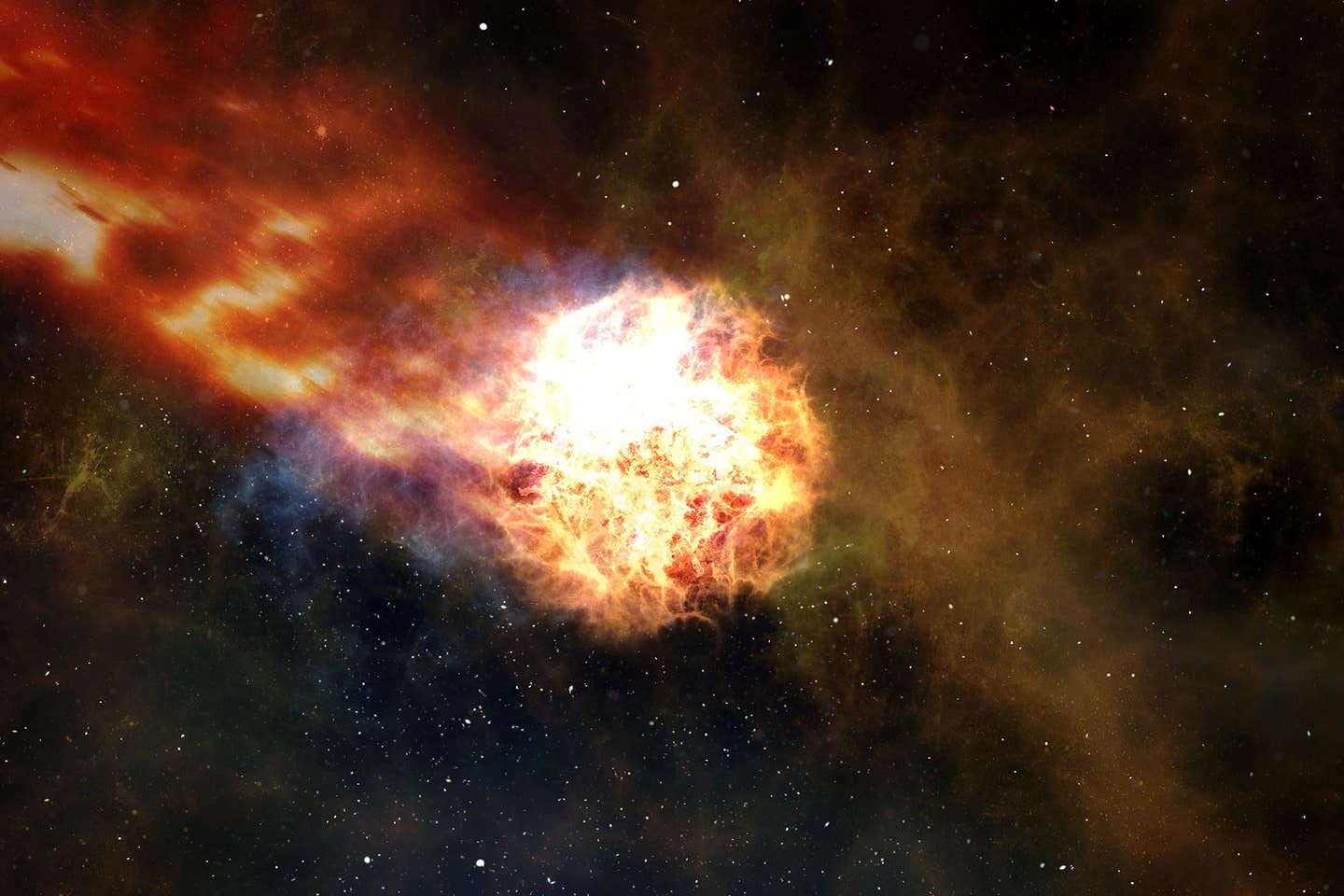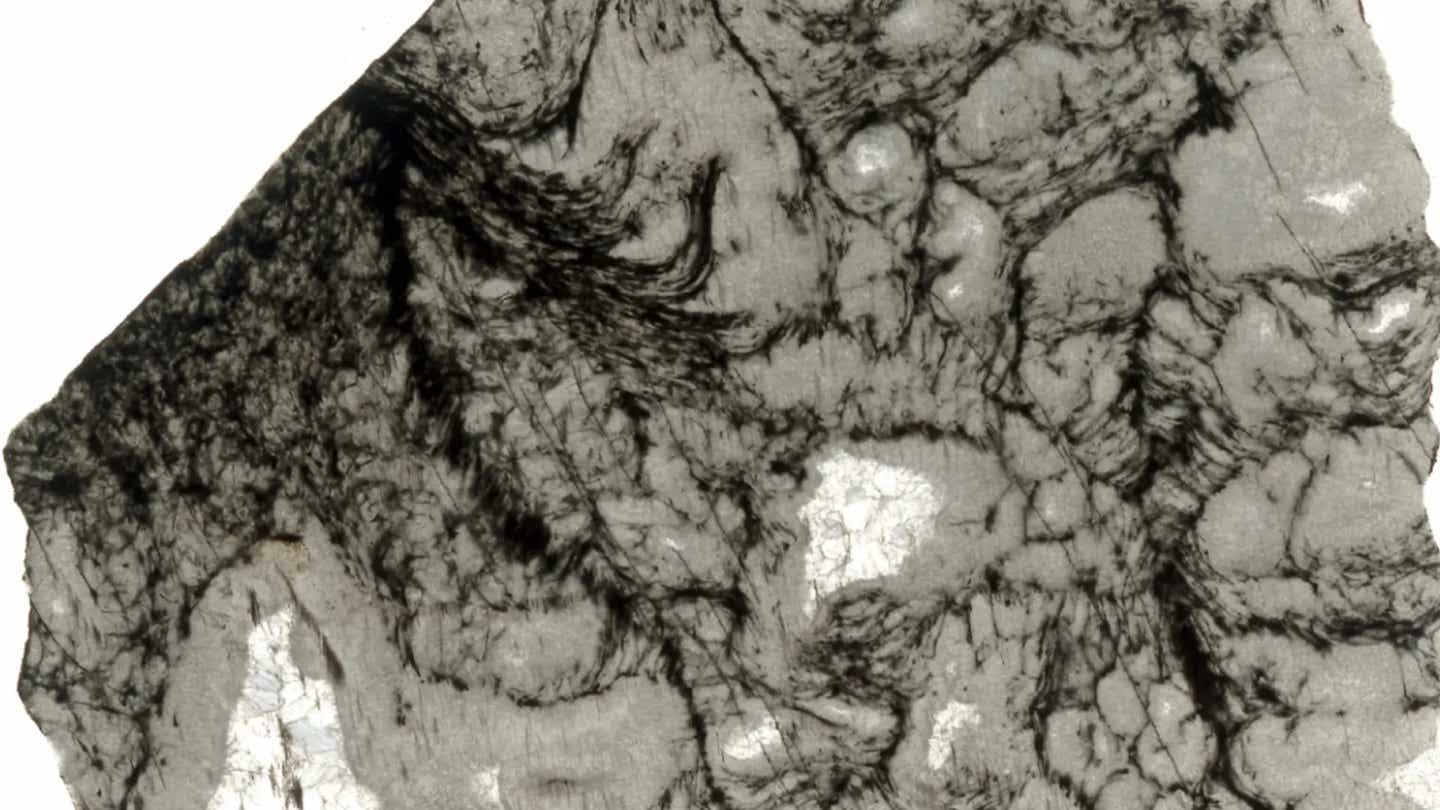Astronomers discover the explosive source of many of the universe’s heaviest elements
Giant magnetar flares may create rare elements like gold and uranium, reshaping our view of cosmic evolution.

A new study reveals giant magnetar flares could be responsible for creating rare elements like gold and uranium, reshaping how we view the cosmos. (CREDIT: CC BY-SA 4.0)
For years, astronomers puzzled over the mystery of where the heaviest elements in the universe—like gold, uranium, and platinum—come from. Scientists understood that these elements had to form under rare and extreme conditions. But despite decades of theories, no one had a clear answer. A recent study led by researchers at The Ohio State University and published in the journal, The Astrophysical Journal Letters, may have found a big piece of that puzzle.
The team revisited decades-old space data and discovered that up to 10% of the heavy elements in the Milky Way might come from an explosive source known as a magnetar flare. These flares are violent outbursts from magnetars, which are ultra-magnetized neutron stars. Magnetars are the super-dense remains of massive stars that exploded in supernovae.
“Neutron stars are very exotic, very dense objects that are famous for having really big, very strong magnetic fields,” said Todd Thompson, a professor of astronomy at The Ohio State University and co-author of the study. “They’re close to being black holes, but are not.”
What makes this discovery exciting is its ability to explain how some of the most valuable and rare elements on Earth, and possibly across the cosmos, were made in the first place.
The Power of the R-Process
The formation of heavy elements happens through something called the r-process, or rapid neutron capture. This is a chain of nuclear reactions that requires a high number of neutrons and very fast conditions. For a long time, researchers believed these conditions mostly happened during the collision of neutron stars. One such collision was observed in 2017, providing the first real evidence that heavy metals were being created through this cosmic method.
But this kind of event doesn’t happen often enough—or fast enough—to explain all the heavy elements we see, especially in the early universe. That led scientists to wonder: what other powerful processes could do the job?
This new study looked at an old cosmic explosion: the 2004 giant flare from a magnetar named SGR 1806–20. It was so intense that scientists had to measure some of it by looking at its reflection off the moon. By studying the gamma rays from that flare, the researchers found signs that freshly formed heavy elements had been launched into space.
Related Stories
These findings suggest that the flare not only released light and energy, but also sprayed out a hot cloud of material that created heavy elements through the r-process. As these elements broke down, they released heat and radiation that matched the team’s predictions. This makes magnetar flares a newly confirmed factory for some of the universe’s most precious materials.
“I love new ideas about how systems work, how new discoveries work, how the universe works,” Thompson said. “That’s why results like this are really exciting.”
Building Blocks of Life and Planets
Magnetars don’t just create rare metals like platinum and gold. The supernova explosions that form them also produce the basic ingredients for life. Elements like oxygen, carbon, and iron are all created in these powerful blasts. Once released, they mix with gas and dust in space and help form new stars and planets.
“All of that material they eject gets mixed into the next generation of planets and stars,” Thompson said. “Billions of years later, those atoms are incorporated into what could potentially amount to life.”
This is how the elements forged in distant cosmic explosions end up in places like Earth—and even inside our bodies.
Magnetars may also help explain strange space signals known as fast radio bursts, or FRBs. These are quick flashes of energy coming from galaxies far away. Scientists still don’t fully understand what causes them, but studying magnetar flares could bring us closer to solving that mystery too.
Looking at the Light
Magnetar flares happen quickly and don’t occur often, making them hard to study. Modern space telescopes like Hubble or the James Webb Space Telescope are not built to catch these events. Even specialized tools like NASA’s Fermi Gamma-ray Space Telescope can only see parts of these flares if they are close enough.
To get a better look, researchers are hoping for help from a future mission: the Compton Spectrometer and Imager (COSI). This satellite will scan the sky for high-energy cosmic events and could detect the gamma rays from a future magnetar flare. If a strong enough flare happens nearby, COSI could help scientists confirm the link between magnetar explosions and heavy element creation.
“We’re generating a bunch of new ideas about this field, and ongoing observations will lead to even more great connections,” Thompson said.
In the meantime, the 2004 flare remains one of the most valuable clues. Data from multiple satellites—INTEGRAL, Konus-WIND, and RHESSI—showed a delayed wave of gamma rays, peaking several minutes after the initial burst and fading over the course of a few hours. This smooth decline matched predictions of radioactive decay from newly formed r-process elements.
The decay also produced gamma-ray light curves and energy patterns that closely matched computer models. This included specific peaks of energy from known radioactive isotopes, giving scientists even more confidence in the theory.
A New Chapter in Space Chemistry
The study adds to a growing list of possible r-process sites, which includes neutron star mergers, supernova winds, and black hole disk outflows. However, magnetar flares now stand out as a unique source—one that might have played an especially important role in the early universe.
Magnetars have surface magnetic fields roughly a million billion times stronger than Earth's. They can release more energy in a second than our sun does in 100,000 years. When a flare occurs, it sends out a jet of particles moving up to 70% the speed of light. These particles slam into surrounding space, creating powerful radio waves and lighting up the cosmos.
Hydrodynamic simulations show that during a flare, energy can build up under the surface of a neutron star. That energy then triggers a shockwave, blasting material outward at incredible speeds. These conditions are perfect for the r-process to take place.
As the ejected material cools, the radioactive atoms begin to break down. They release energy in the form of light, heat, and gamma rays. This mix of emissions creates a short-lived flash of light—similar to a kilonova, but on a smaller scale.
In one example, a signal detected 400 seconds after the SGR 1806–20 flare gradually peaked between 600 and 800 seconds. Then it faded smoothly over the next several thousand seconds. The timing, intensity, and shape of the light curve all fit the expected profile of radioactive decay from freshly created r-process elements.
This event may have been our first real look at the radioactive fingerprint of magnetar-made metals.
Now, with improved models and more sensitive equipment, scientists are looking forward to the next big flare. It might take years or even decades, but when it comes, the sky will once again tell the story of how the universe made its rarest ingredients.
Note: The article above provided above by The Brighter Side of News.
Like these kind of feel good stories? Get The Brighter Side of News' newsletter.



